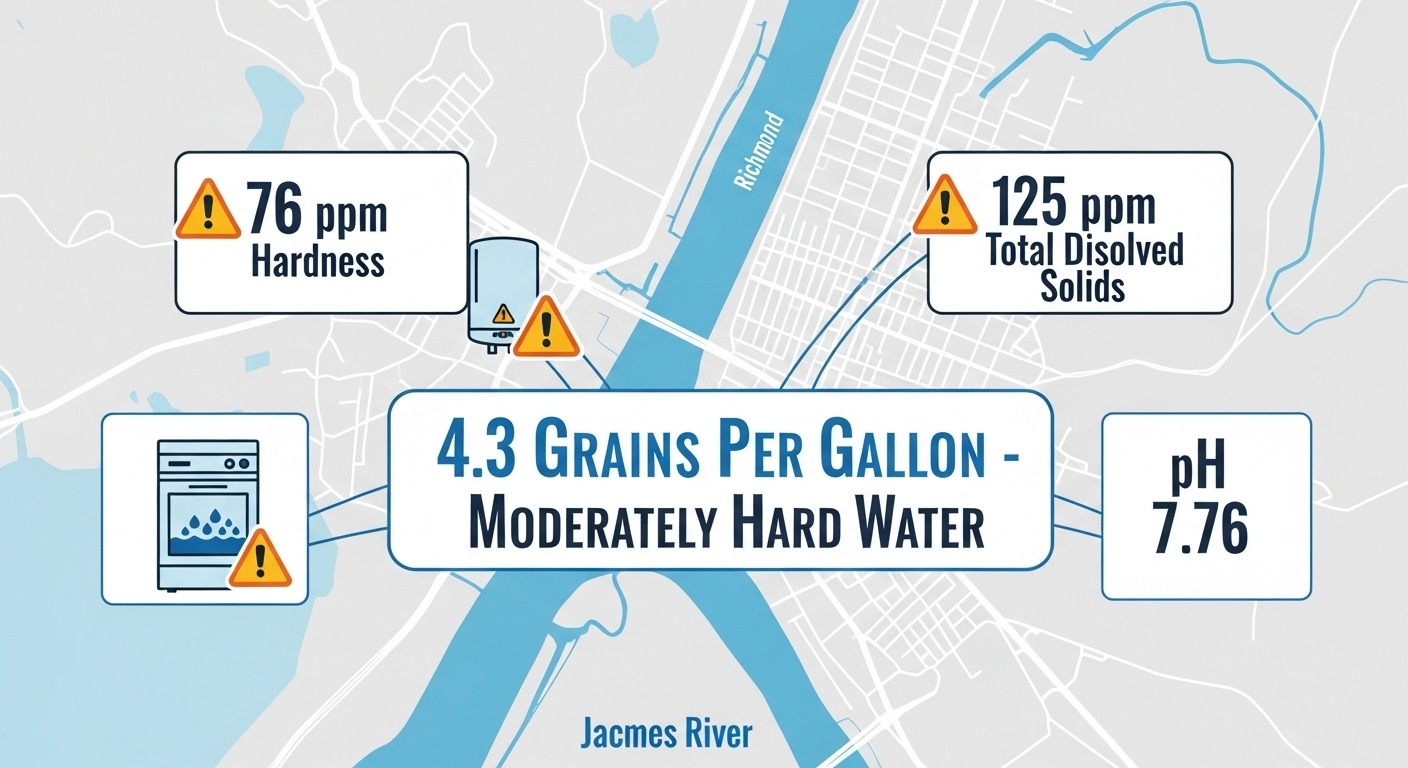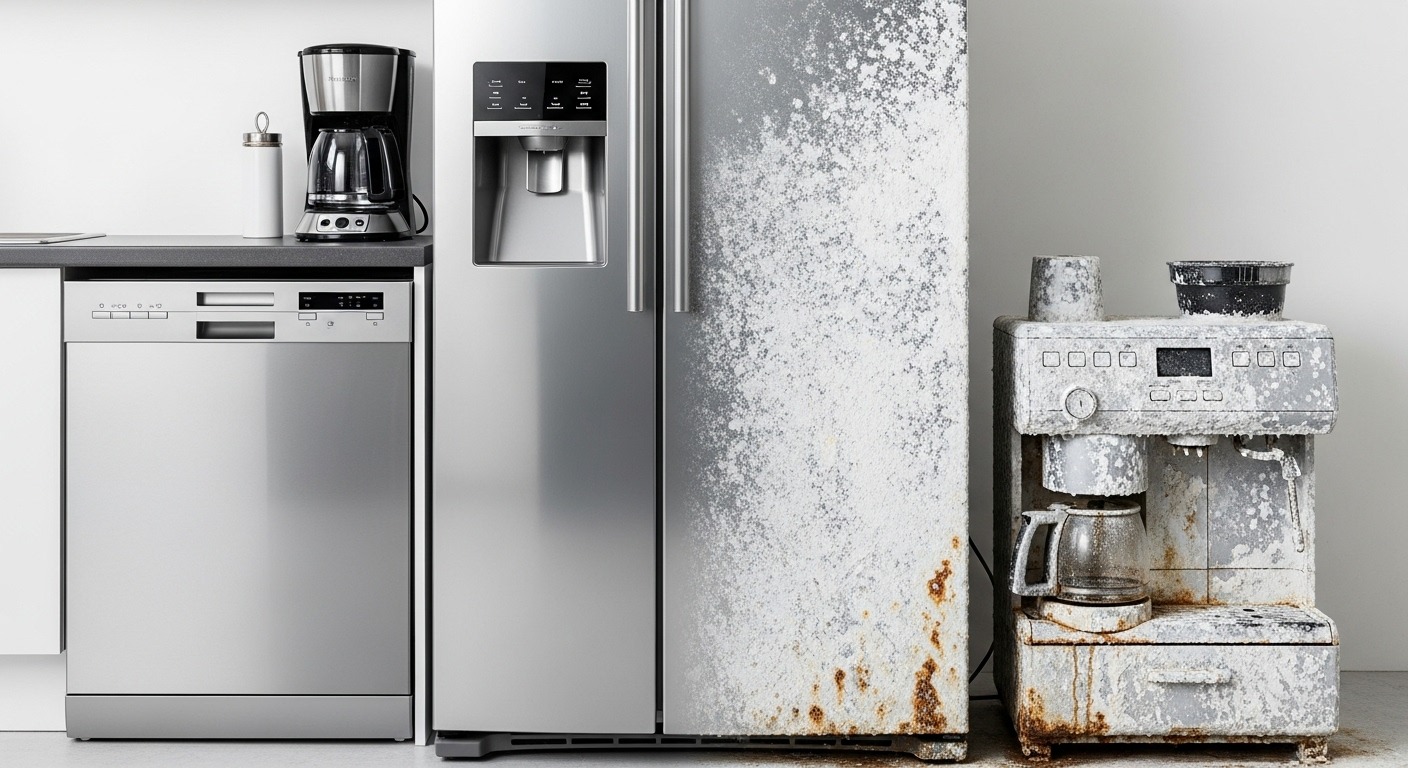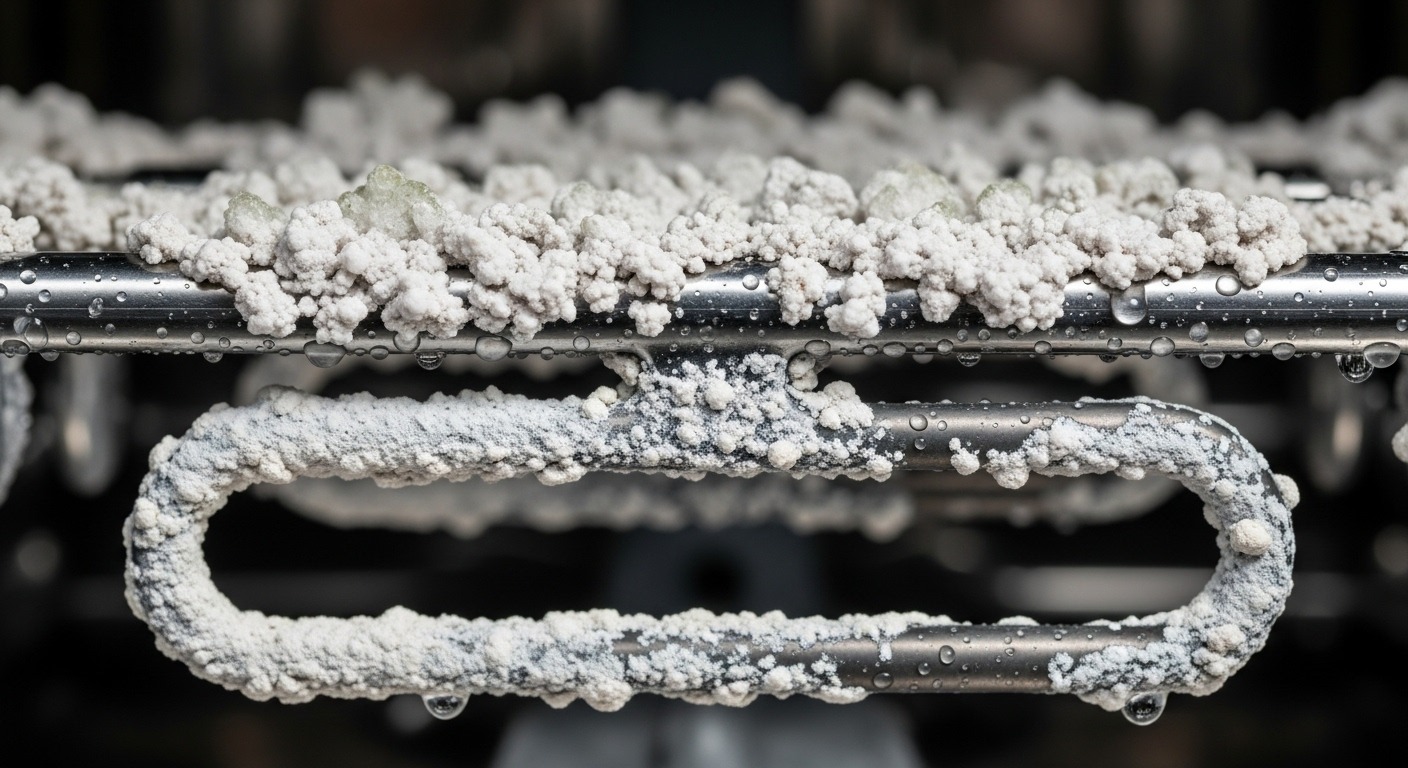Richmond Water Quality vs. Your Appliances: How Hard Water and Mineral Buildup Are Secretly Destroying Your Kitchen Investment (Plus Protection Strategies)
Tired of white spots covering your dishes and mysterious appliance breakdowns that seem to happen way too early? Richmond’s “moderately hard” water might be silently sabotaging your kitchen investments, costing you thousands in premature replacements and sky-high energy bills.
Picture this: you’ve just dropped serious cash on that gorgeous new dishwasher, only to find it’s leaving everything looking like it went through a chalk dust storm. Your ice maker starts producing cloudy cubes that taste like pennies, and your coffee maker dies after just two years. Sound familiar? You’re not alone in the River City battle against mineral mayhem.
Here’s the thing most Richmond homeowners don’t realize – our city’s water isn’t technically “hard” by national standards, but at 4.3 grains per gallon, it’s packing enough minerals to wreak havoc on your appliances. It’s like that friend who seems totally chill but secretly judges your Netflix choices – harmless on the surface, destructive underneath. The calcium and magnesium in our tap water are literally building tiny rock formations inside your appliances, and trust me, these aren’t the kind of crystals you want in your kitchen.
What makes this extra frustrating is how sneaky hard water damage can be. Unlike a dramatic pipe burst or obvious leak, mineral buildup happens slowly, quietly destroying your appliances from the inside out. By the time you notice the symptoms, you’re often looking at expensive repairs or full replacements that could have been prevented.
Key Outtakes:
- Richmond’s moderately hard water at 4.3 grains per gallon causes mineral buildup that reduces appliance efficiency and lifespan by up to 50%
- Hard water damage costs Richmond homeowners an average of $1,200-$2,400 annually in premature appliance replacements and increased energy bills
- Professional water testing and softening systems can prevent 99.6% of scale formation and extend appliance life by 5-10 years
- Early detection through regular maintenance and monitoring can save thousands in repair costs before irreversible damage occurs
- Whole-home water treatment solutions provide better protection than individual appliance treatments for Richmond’s specific water chemistry

Richmond’s Water Quality Reality: The Numbers Behind Your Appliance Problems

Let’s get real about what’s flowing through your Kitchen faucets. Richmond’s water supply isn’t winning any purity contests, and the stats prove it. Our municipal water clocks in at 4.3 grains per gallon of hardness, which officially puts us in the “moderately hard” category. But here’s where it gets interesting – that seemingly innocent classification is causing some seriously expensive problems for local homeowners.
The city’s water quality reports show hardness levels at 76 parts per million, with total dissolved solids hitting 125 ppm. To put that in perspective, anything over 60 ppm starts affecting your appliances, and we’re sailing right past that threshold. What’s even more concerning is that these numbers can fluctuate seasonally, with summer months often showing higher concentrations as water usage increases and reservoir levels drop.
But hardness isn’t our only concern. Richmond’s water supply has been flagged for PFAS contamination, affecting approximately 2.5 million Virginia residents. These “forever chemicals” require specialized filtration that goes beyond standard water softening, adding another layer of complexity to protecting your home’s water-using appliances. The pH sits at 7.76 with alkalinity at 53.0 ppm, creating the perfect storm for mineral deposition in your appliances.
What makes Richmond’s water particularly problematic is the specific mineral composition. We’re dealing primarily with calcium and magnesium carbonate, which forms that stubborn white scale you see on everything. Unlike some regions where the minerals might flush through systems easily, our particular cocktail loves to stick around and build up over time. The James River watershed contributes iron and manganese during certain seasons, adding rust-colored stains to the mix.
The geographic reality of our location means we’re pulling water from sources that naturally pick up minerals as they flow through Virginia’s limestone-rich soil. This isn’t going to change anytime soon, so the key is learning to live with it – or better yet, treating it before it reaches your appliances. Understanding these baseline conditions helps explain why that beautiful stainless steel appliance package you bought three years ago is already showing wear and tear that should take decades to develop.
The Hidden Cost Calculator: How Much Richmond’s Water Is Really Costing You

Time for some real talk about the money flowing down your drain – literally. Most Richmond homeowners have no idea they’re hemorrhaging cash because of their water quality, but the numbers are pretty shocking when you actually crunch them. We’re not just talking about higher energy bills here; we’re talking about appliances dying young, warranties getting voided, and repair costs that’ll make your wallet weep.
Let’s start with energy efficiency losses, because this is where hard water really shows its teeth. When mineral deposits build up in your water heater, they act like insulation – but not the good kind. This crusty layer forces your heating elements to work overtime, increasing energy consumption by 20-30% in mild cases and up to 50% when the buildup gets serious. For the average Richmond home, that translates to an extra $200-400 annually just on water heating costs.
Your dishwasher takes a beating too, and not just from leaving spots on everything. Those mineral deposits clog the spray arms, block the filters, and coat the heating element, making the appliance work harder for worse results. The pump has to push water through increasingly restricted pathways, burning out motors prematurely. What should be a 10-12 year appliance lifespan often gets cut to 6-8 years with untreated hard water.
Washing machines face similar challenges, with mineral deposits affecting everything from the drum to the internal plumbing. The heating elements get coated, the pump systems get clogged, and those mineral-laden soap residues leave your clothes feeling stiff and looking dingy. Professional repair techs report that hard water damage is one of the leading causes of premature washing machine failure in the Richmond area.
Here’s where it gets really expensive – warranty issues. Many appliance manufacturers are getting wise to hard water damage and specifically excluding mineral-related problems from their coverage. That means your $1,200 dishwasher that dies after three years from scale buildup? You’re paying for the replacement out of pocket. Insurance companies are starting to follow suit, treating mineral damage as a maintenance issue rather than a covered loss.
The economics get even worse when you factor in the domino effect. Poor appliance performance means you’re running longer cycles, using more detergent (which works poorly in hard water anyway), and dealing with constant repairs. Small appliances like coffee makers and ice machines become consumable items, needing replacement every 2-3 years instead of lasting a decade. When you add it all up, the average Richmond homeowner spends $1,200-2,400 extra per year dealing with hard water consequences.
Appliance-Specific Damage Patterns: What Hard Water Does to Your Kitchen Arsenal

Now that we’ve covered the financial reality, let’s dive into exactly how Richmond’s mineral-rich water is systematically destroying each of your kitchen appliances. Understanding these specific damage patterns helps you spot problems early and take protective action before things get expensive.
Your dishwasher is probably showing symptoms right now, even if you haven’t connected the dots. Those white spots and cloudy film on your glassware? That’s just the visible tip of the mineral iceberg. Inside your dishwasher, calcium and magnesium deposits are coating the spray arms, creating tiny dams that redirect water flow and reduce cleaning power. The heating element gets encased in scale, making it work harder and eventually burn out. Professional repair techs see this constantly in Richmond homes – dishwashers that should last 10-12 years dying after 5-6 years with heating element failure or pump burnout.
The really sneaky part is how mineral buildup affects your dishwasher’s sensors and control systems. Modern dishwashers rely on water temperature and flow sensors to optimize cycles, but mineral deposits throw off these readings. Your dishwasher might run longer cycles trying to compensate, or switch to high-heat settings unnecessarily, accelerating wear on seals and gaskets. The result is poor cleaning performance that gets progressively worse, followed by expensive mechanical failures.
Refrigerator ice makers and water dispensers are particularly vulnerable because they concentrate minerals as water freezes and dispenses. The ice you’re putting in your drinks contains concentrated minerals that affect taste and clarity, while the internal components get clogged with scale buildup. Water lines develop restrictions, pumps work harder, and filters get overwhelmed trying to handle mineral content they weren’t designed for.